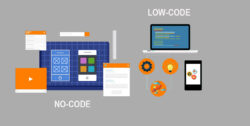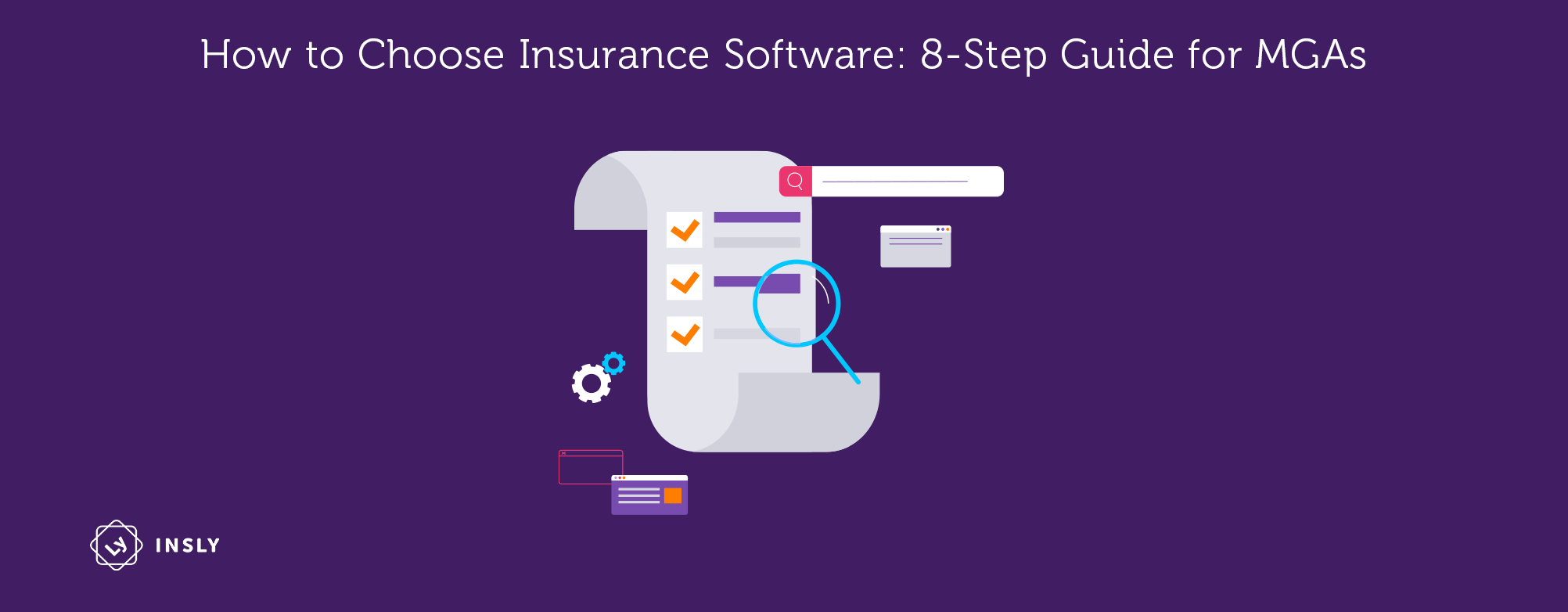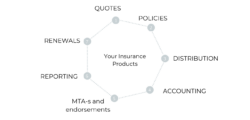Buying insurance software for your MGA can be a complicated process:
1) an underwriting operation has many changing parts, each with their own requirements;
2) there are huge differences in insurance software being offered, ranging from no-code solutions, where insurance products can be built in a drag-and-drop editor, to fully custom-developed software, where you work with an IT project manager for weeks for the desired result.
Previously, we have spoken about the advantages of no-code and low-code insurance software. This time, we will focus on consideration points that MGAs should keep in mind when buying insurance software.

Insurance software must back a successful underwriting operation with its many components which we suggest to distinct as follows:
- front office – distribution and policy administration functionalities: quote and bind, underwriting workflow management, rating, document production, signing, storing, sales business intelligence (BI), etc.;
- back office – premium accounting, general ledgers, carrier bordereaux, BI, etc.;
- claims – claims management functionalities: claims storing, workflow management, reserve management, reports, BI, etc.
Front office
Here are a few suggestions to keep in mind when evaluating front-office requirements.
1. Look for a FullCycle, Not Just New Business Support
Most insurance software providers offer some form of quote and bind functionality. Some providers may have just the quoting automation without the ability to bind. Other insurance software providers may have a good new business sales flow, but completely lack the ability to make mid-term changes. On the other hand, some insurance software may provide renewal reminders, but is unable to cater to a different set of rates for renewed business.
Naturally, everything comes down to your business context. If only one policy in a thousand is changed mid-term, maybe MTA and endorsement functionality is not so critical for you. Try to think of the full cycle: how does the insurance software help you in simplifying the submission process from quote to bind to renewal.
You should note the following regarding document management.
If you have standardised products, e.g. binder or programme, consider whether the insurance software can generate dynamic documentation based on your templates:
- if yes, can it generate documents for selected covers (if you have a multi-section policy);
- if yes, can you easily update your changes in the document templates or do you need the provider’s support?
If you rely on documentation from other providers or have complex policies with very bespoke documents, think of:
- how convenient is it to transfer documents from emails to your IT system?
- can documents be synced between the IT system and your client folders (e.g. Onedrive, Google Drive, etc.)?
 2. Distribution Model
2. Distribution Model
Insurance software should be the best match for your distribution model. Some providers focus on B2C models with off-the-shelf client portals, prebuilt payment integrations, etc. Other insurance software providers, like Insly, are more suited to broker distribution with broker portal capabilities and automated referral rules between retail partners and your underwriters. Yet, some providers offer an omni-channel approach. Going through case studies and references on businesses similar to yours might help to decide.
3. Product and Customer Journey
The type of products you write can have a significant impact on which insurance software is a good match for you. No provider is good at everything (even if they claim otherwise!) and some will have a natural prevalence towards personal lines and B2C model, while other insurance software providers are designed for commercial insurance through intermediated channels. Again, look for proof of past experience working with businesses similar to yours.
What to keep in mind for the customer journey?
Your customer will expect doing business with you to be easy, regardless of whether it’s the insured or the broker who sells your product.
If selling direct, look for:
- a front end that can be easily changed to match your brand, i.e. white-label software;
- payment integration options that are popular in your market(s): credit cards, direct debit, monthly bills, etc.
If selling through brokers:
- from your perspective, try to gauge how easy it would be to give and manage brokers access;
- from a broker’s perspective, think of why they should they bother to log in to your portal. Can you give a quote in 5 mins instead of the usual 24h? Can you do endorsements and automatic renewal of quotes, etc.;
- if you don’t wish to have a broker portal, how flexible is the insurance software in adapting to your workflow?
4. Connectivity
When choosing insurance software, whatever front-office solution you get, for future-proofing your business, make sure it has decent API capabilities, i.e. it could communicate with other IT systems
Book a demo
Back office
For back-office capabilities, it’s good to compare which approach do different insurance software providers take on accounting and reporting.
5. Accounting
When talking to MGAs, at Insly, we usually look at accounting requirements from two angles: premiums in (paid by client or broker to the MGA) and premiums out (the MGA pays to their capacity providers).
Premiums IN
Level 1
You need to create invoice documents for your clients – brokers or insured. Most solutions, including only front–office solutions, should cater to this.
Level 2
You need to reconcile payments and maintain your own accounting ledger. It’s important to distinguish between insurance and non-insurance requirements.
For example, Insly has a built-in double-entry ledger which is limited to only insurance transactions, but by integrating it into third-party accounting software, e.g. Xero, your accounting department can get a good overview of both your trust and office accounts.
Level 3
All premium reconciliations happen automatically via API calls.
Premiums OUT
Level 1
You must produce a written risk bordereau to your carriers. This is a simple functionality provided by most insurance software.
Level 2
You must produce written and settlement bordereaux to your carriers separately, which means that a separate carrier payment screen must be provided by the insurance software.
Level 3
Your carrier gets all the information from you electronically and in real time. Unfortunately, this is not yet a standard practice, even though many insurance software has been equipped with this capability for some time.
6. Reporting
Any modern insurance back-office solution should include building custom reports and dashboards or support an external BI tool for this purpose.
7. Connectivity
When choosing insurance software, whatever back-office solution you get, for future-proofing your business, make sure it has decent API capabilities, i.e. it could communicate with other IT systems.
Claims
8. FNOL and Claims Tracking vs Reserve Calculations and Full Workflow Tracking
Claims solutions differ in their depth of functionality. Some insurance software offers basic FNOL inserting and the ability to produce reports from entered claims data. These are often bundled with back-office policy administration systems. This will suit most MGAs that have outsourced all or parts of their claims management services. Although, if you have full claims handling authority, you must probably be able to track and calculate reserves, capture claim settlement transactions, and much more.
If choosing the right insurance software sounds like a lot to do on your own, it is reasonable to bring external consultants on board. You can check out our overview of how IT consultants specialised in the MGA business can help you out.
Conclusion
Hopefully, this checklist provides you with some good consideration points when choosing your insurance software. Just keep in mind that many next generation no-code and low-code platforms address specific issues, instead of covering a full functionality cycle. That is why you should assess your needs very carefully.
If you need more in-depth information on these categories and want to discuss with our team, feel free to reach out!





